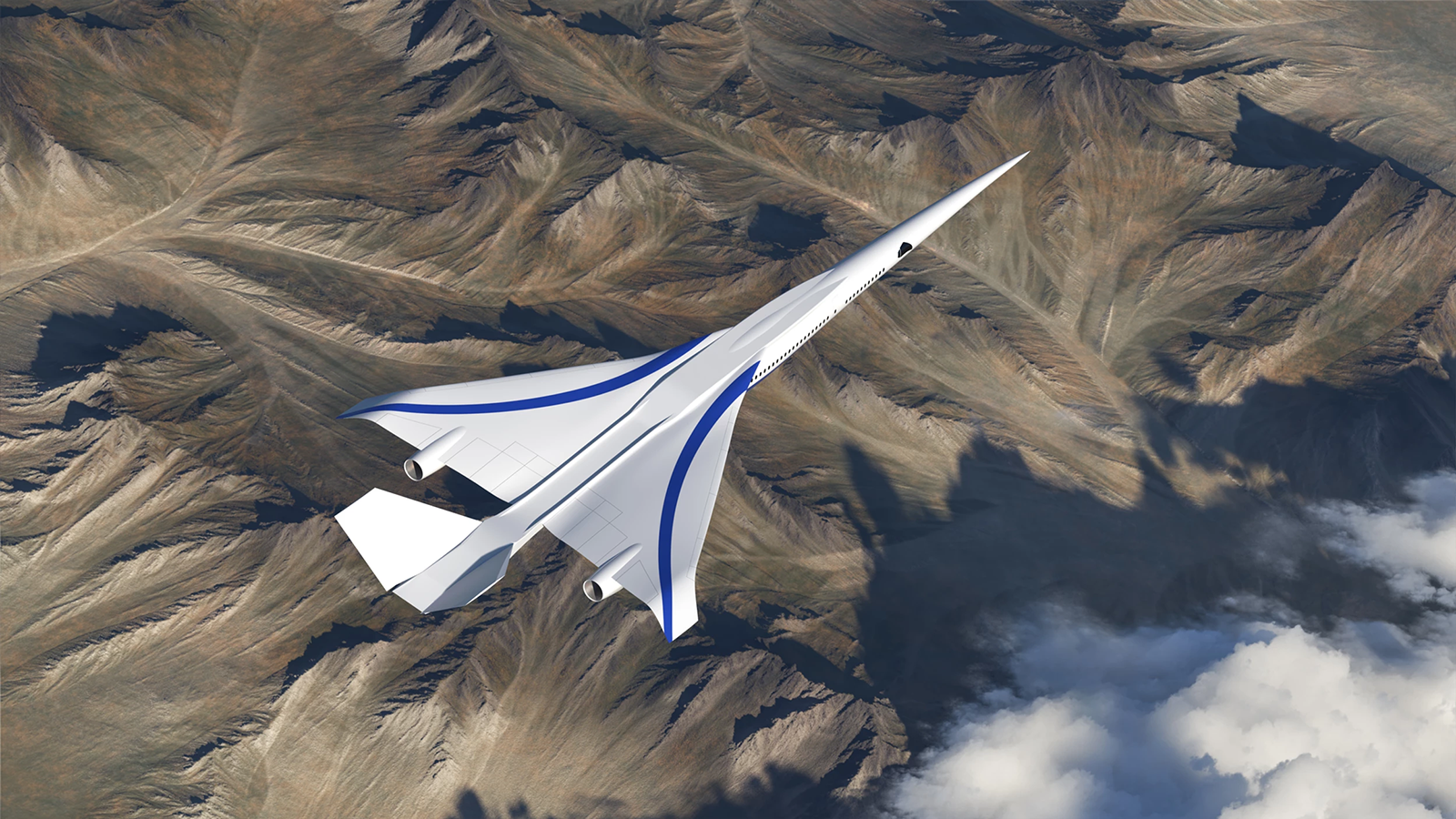Stay Up to Date
Submit your email address to receive the latest industry and Aerospace America news.
The Supersonics Integration Committee promotes a community of practice engaged in the technical, business, environmental and societal issues associated with supersonic transports and the research needs of this emergent capability.
Research, technology development and aircraft concepts investigations toward future civil supersonic aircraft continued in the U.S., Europe and Asia, with academia, research establishments and industry tackling three major challenges: demonstrating low-boom aircraft concepts, reducing the landing and takeoff noise and reducing emissions.
In March, the Japan Aerospace Exploration Agency tested a 1.62% scale model of NASA’s X-59 supersonic aircraft and three older sonic boom models from NASA and Boeing in JAXA’s 1-meter-by-1-meter supersonic wind tunnel. The same X-59 model was previously tested in the 8-feet-by-6-feet supersonic wind tunnel at NASA’s Glenn Research Center in Ohio with a pressure rail to capture its off-body pressure signature. Multiple configurations of the model were tested in both wind tunnels to study the effects of control surface deflections on the sonic boom signature. The test data was analyzed and documented for use by NASA’s computational fluid dynamics teams for code validation and dissemination to the supersonics research community. The tunnel-to-tunnel comparisons improve confidence in the acquired data and increase understanding of the X-59 design and expected sonic boom signatures prior to first flight, scheduled for early 2023.
In May, the Aerodynamics Research Institute of China’s Aviation Industry Corp. measured the sonic boom off-body pressure distribution for a supersonic transport model in its FL-60 wind tunnel, and the near-field sonic boom data was used to validate simulations. ARI also developed an in-house code based on a 3D nonlinear Khokhlov-Zabolotskaya-Kuznetzov, KZK, model for prediction of sonic boom propagation in atmospheric turbulence. Validated sonic boom propagation tools help the broader industry build confidence in the analytical methods.
A dedicated session comparing results of a sonic boom focusing prediction benchmark analysis, proposed by the international research community, was held in May during the 182nd Acoustical Society of America meeting. Differences in the interfaces between computational fluid dynamics and propagation codes, caustic geometry calculations and computational methods were examined and identified as potential contributors to differing results between the sonic boom focusing models, helping set future research priorities.
In April, JAXA concluded a noise assessment of a conceptual supersonic aircraft proposed by NASA to discuss landing and takeoff noise standards and estimated its uncertainty via Monte Carlo simulations. The research results provide a better understanding of the noise impacts associated with the introduction of supersonic aircraft in the development of noise standards.
Throughout the year, the European Union-funded research project SENECA, noise and emissions of supersonic aircraft, continued modeling the engine emissions, landing and takeoff noise, and the global environmental impact of supersonic aircraft. A review article on the effects of supersonic aviation on ozone and climate was published in May, providing insight for future research efforts.
In March, California startup Exosonic completed its first conceptual design review of its latest quiet supersonic airliner design, funded under a U.S. Air Force AFWERX Small Business Innovation Research Phase II grant. As a first step toward this airliner, Exosonic and EpiSci, also in California, in May announced a partnership to develop an uncrewed, autonomous supersonic aircraft that could support the U.S. Defense Department’s “adversary air, aerial target, and collaborative combat aircraft applications,” according to the press release.
During the Farnborough International Airshow in July, Boom Supersonic announced a redesign of its Mach 1.7 Overture plane and a partnership with Northrop Grumman. In August, American Airlines announced a purchase agreement for 20 Overture aircraft, with an option to purchase an additional 40 aircraft. American is the third airline to announce orders for Overture, which Boom plans to begin flying in 2026. Passenger flights are scheduled to commence by 2029.
Contributors: Matt Kamlett, John Morgenstern, Lori Ozoroski, Zhansen Qian and Courtney S. Winski
Stay Up to Date
Submit your email address to receive the latest industry and Aerospace America news.




